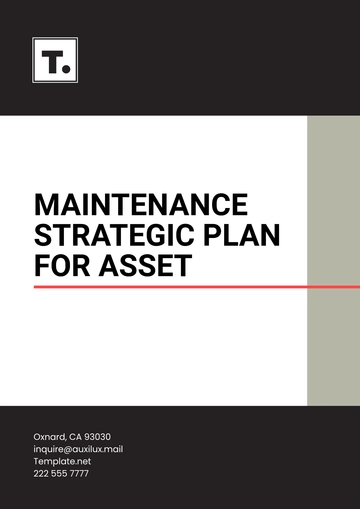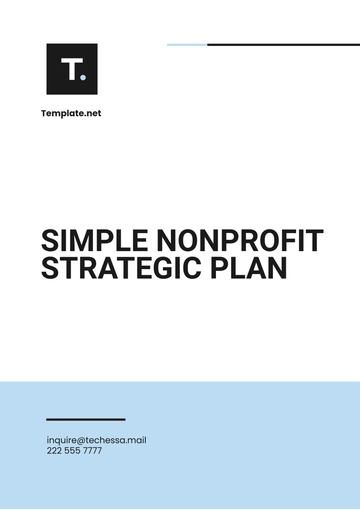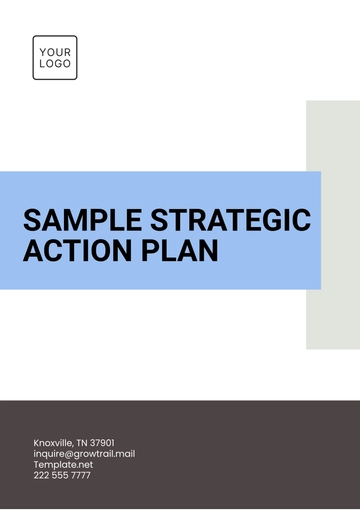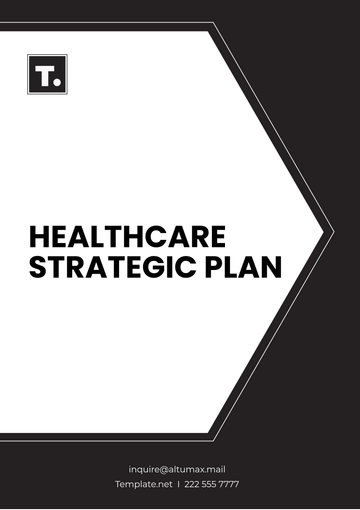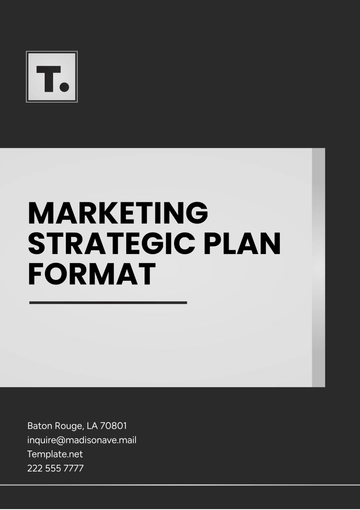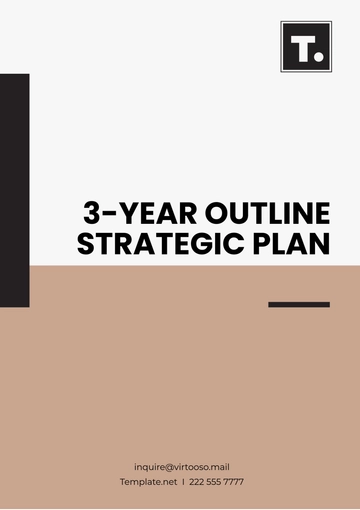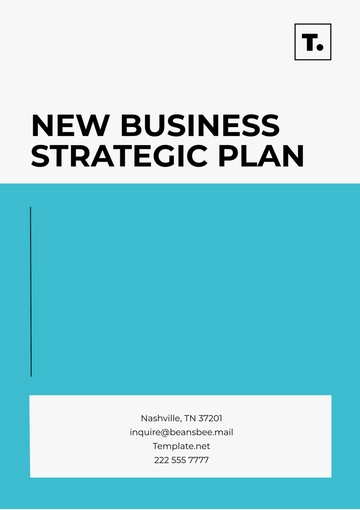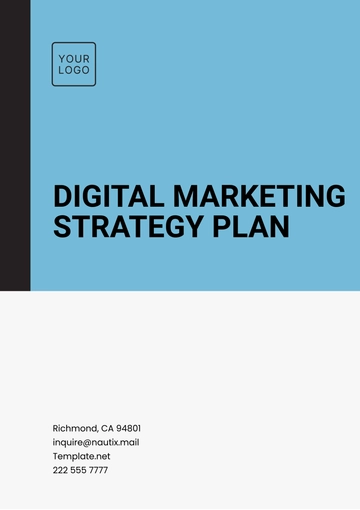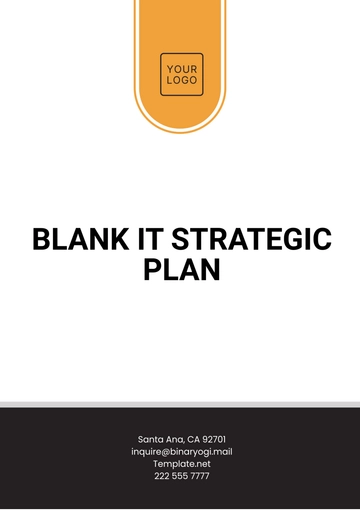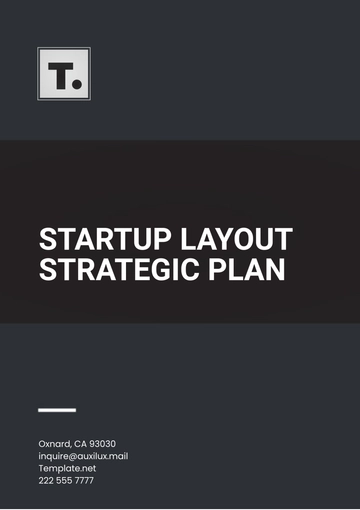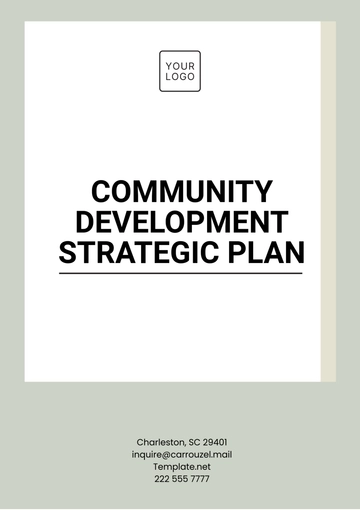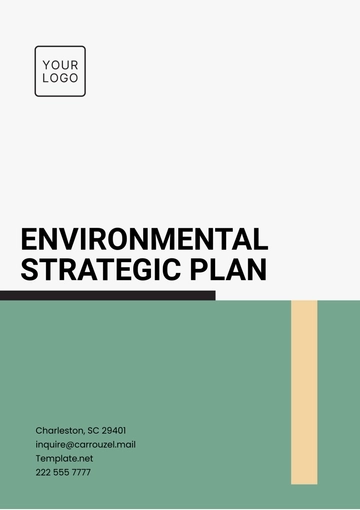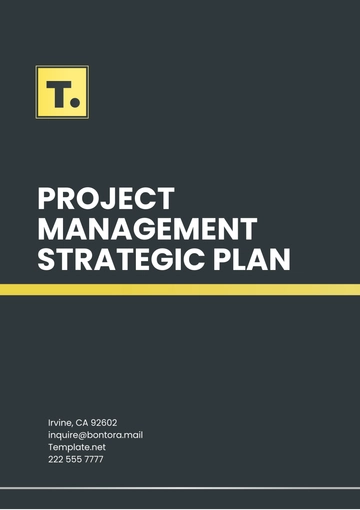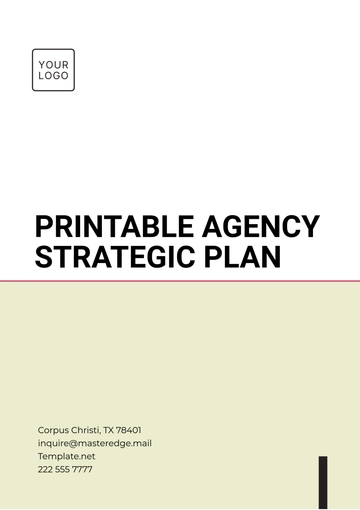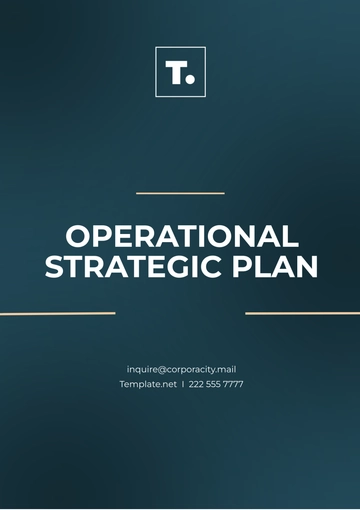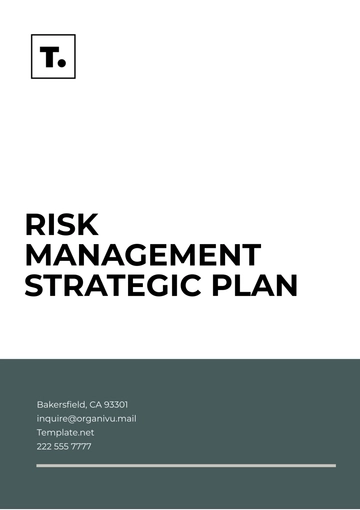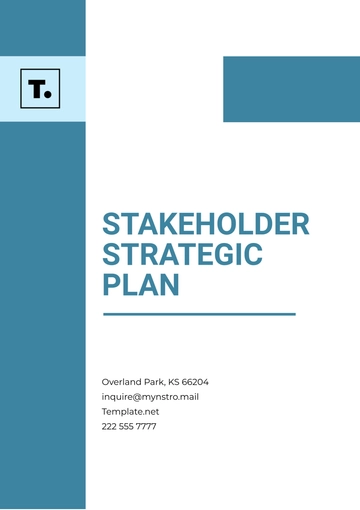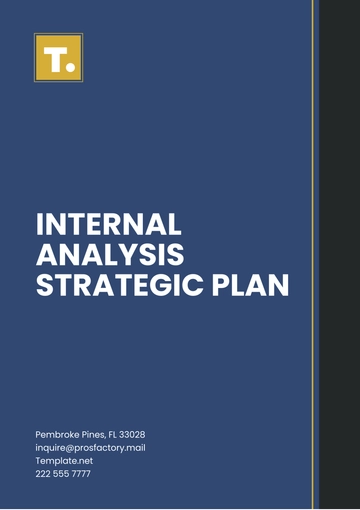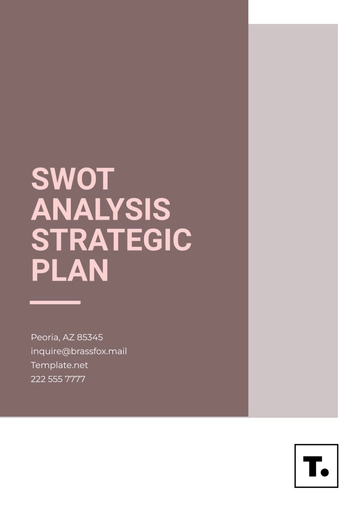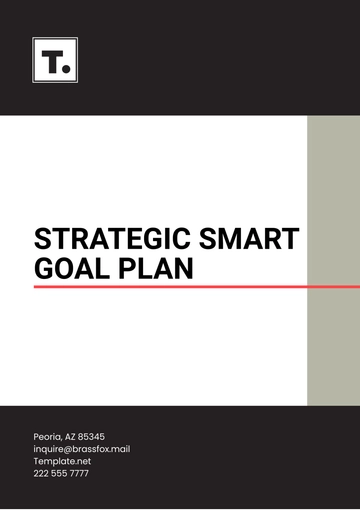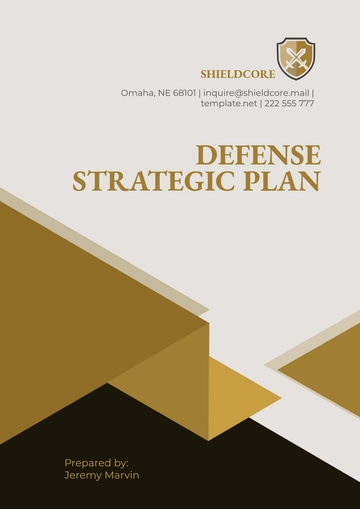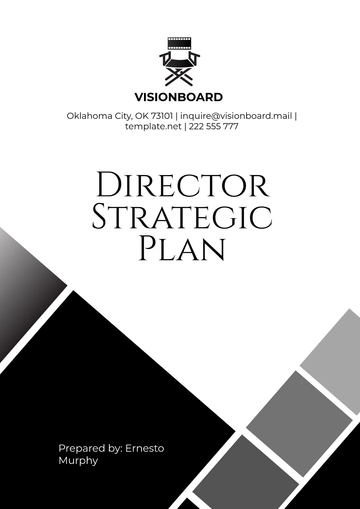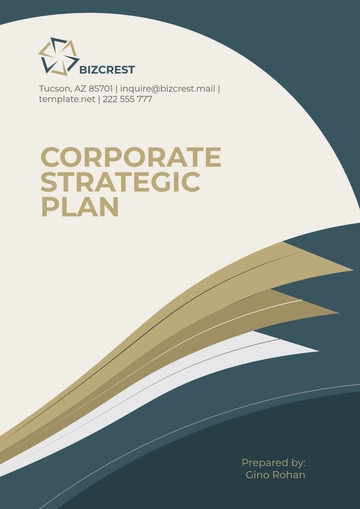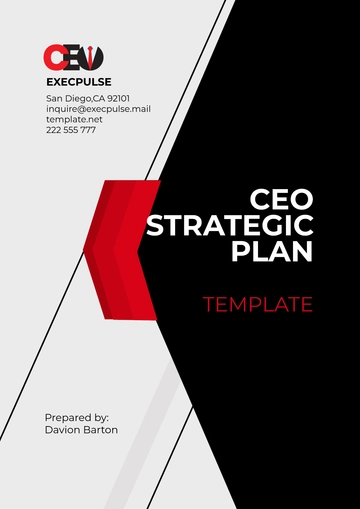Free Workplace Occupational Health and Safety Strategic Plan
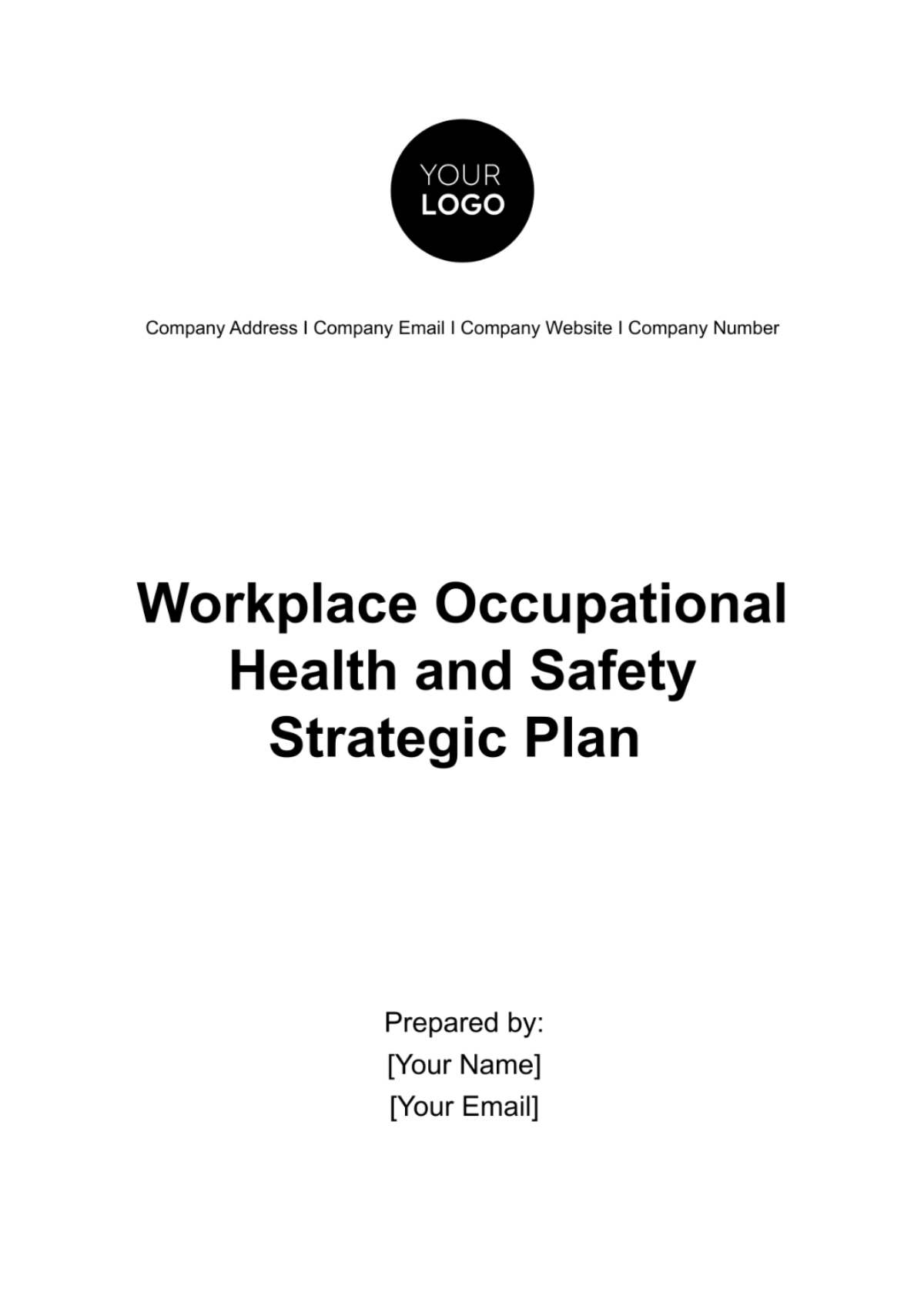
I. Executive Summary
In this Executive Summary, [Your Company Name] encapsulates a commitment to excellence in occupational health and safety. Our comprehensive strategic plan serves as a roadmap for fostering a workplace culture that prioritizes the well-being of our employees. By outlining key goals and objectives, we underscore our dedication to achieving a zero-accident environment, integrating a safety-first mentality, and ensuring compliance with ever-evolving regulations. This summary sets the stage for a detailed exploration of our initiatives, reflecting our proactive stance toward continuous improvement in workplace safety.
II. Introduction
[Your Company Name], a [industry/type of company], takes pride in introducing this Workplace Occupational Health and Safety Strategic Plan. As a leading entity in our field, we recognize the profound impact of a secure work environment on both employee satisfaction and organizational success. Rooted in our commitment to excellence, this plan outlines our proactive strategies for identifying and mitigating risks, ensuring legal compliance, and fostering a culture of responsibility that goes beyond mere adherence to regulations.
III. Policy Statement
At [Your Company Name], our Policy Statement serves as the cornerstone of our commitment to workplace health and safety. We affirm an unwavering dedication to creating and maintaining a secure environment for our employees. This commitment extends beyond compliance; it reflects a culture where the safety of every team member is paramount. Our policy is a pledge to implement practices that not only prevent accidents but also nurture a workplace where each individual feels valued, supported, and empowered to contribute to a safer and healthier future.
IV. Goals and Objectives
Our goals encompass a holistic approach to workplace health and safety, prioritizing the well-being of our employees.
Goal 1: Zero-Accident Workplace
A. Objective 1: Achieve a 20% reduction in workplace accidents within the next year through proactive hazard identification and mitigation.
B. Objective 2: Implement regular safety audits to systematically identify and address potential hazards, fostering a preventive mindset among employees.
Goal 2: Safety Culture Integration
A. Objective 1: Develop and implement comprehensive training programs to instill a safety-first mentality at all organizational levels.
B. Objective 2: Foster employee engagement in safety initiatives, creating a collaborative environment where every team member actively contributes to our safety culture.
Goal 3: Regulatory Excellence
A. Objective 1: Stay current with evolving OHS laws and regulations, ensuring our practices consistently meet or exceed legal requirements.
B. Objective 2: Conduct regular compliance audits to guarantee our operations align with the latest standards, safeguarding our workforce and organizational integrity.
V. Risk Assessment
Conducting a thorough risk assessment is central to our commitment. We will employ advanced methodologies to identify and prioritize workplace hazards systematically. By leveraging innovative risk mitigation strategies, we aim to minimize potential risks effectively, ensuring a safer environment for our valued employees and reducing the probability of accidents and injuries.
VI. Legal and Regulatory Compliance
Our pledge to compliance involves proactive measures. We commit to not only staying informed about evolving occupational health and safety laws but also to leading the industry in adherence. Regular internal audits, coupled with swift updates, guarantee our operations consistently meet or surpass regulatory requirements, fostering a culture of responsibility and accountability.
VII. Responsibilities and Accountabilities
The cornerstone of our safety culture lies in clearly defining roles and responsibilities. We will implement a transparent framework that empowers every employee to actively contribute to our safety culture. Establishing robust accountability mechanisms ensures that each team member understands their role in fostering a secure workplace, reinforcing a collective commitment to the well-being of our workforce.
Role | Responsible Individual | Responsibilities |
Executive Leadership | [Name] | Provide visible leadership, endorse safety policies, allocate necessary resources, and champion a culture of safety. |
Health and Safety Team | [Name] | Conduct regular risk assessments, oversee safety training programs, and ensure compliance with regulations and standards. |
HR Department | [Name] | Facilitate communication on health and safety policies, manage training records, and address employee concerns related to OHS. |
Department Managers | [Name] | Implement safety protocols within their respective departments, lead safety meetings, and ensure team members follow guidelines. |
Employees | All | Adhere to safety protocols, report incidents promptly, participate in training programs, and contribute to a culture of safety. |
VIII. Training and Education
Our dedication to safety is reflected in comprehensive training initiatives. We commit to developing cutting-edge programs that equip our workforce with advanced skills and knowledge. By fostering a proactive approach to safety in all facets of their responsibilities, our employees will become champions of a secure workplace, contributing to a culture where safety is not just a priority but a shared value.
Training Program | Implementation Date |
Workplace Hazard Identification | [Month Day, Year] |
Emergency Response Procedures | [Month Day, Year] |
Ergonomics and Workplace Well-being | [Month Day, Year] |
Incident Reporting and Investigation | [Month Day, Year] |
Continuous Improvement in Safety | [Month Day, Year] |
IX. Communication Plan
Establishing a robust communication plan is pivotal. We will implement regular safety briefings, utilizing multiple channels to disseminate crucial health and safety information effectively. Emergency response procedures will be communicated clearly through interactive training sessions, ensuring all employees understand their roles. Additionally, a centralized platform will facilitate real-time updates and feedback, promoting a culture of open communication where everyone is engaged and informed about safety protocols.
Key communication channels include:
1. Company-wide Meetings:
Monthly gatherings to discuss safety updates, share success stories, and address employee queries.
2. Internal Newsletters:
Regular newsletters highlighting safety achievements, upcoming training, and important OHS information.
3. Intranet Platform:
A dedicated space for posting safety notices, emergency procedures, and relevant resources.
4. Email Alerts:
Timely alerts for critical updates, ensuring swift dissemination of crucial information.
5. Safety Hotline:
A confidential hotline for reporting safety concerns or seeking guidance.
X. Incident Reporting and Investigation
Implementing a standardized incident reporting system is crucial for timely responses. Employees will have access to user-friendly reporting tools, encouraging prompt reporting of incidents and near misses. Our commitment to thorough investigations includes a multidisciplinary team that analyzes root causes, leading to targeted corrective actions. Regularly sharing lessons learned from investigations will further enhance our collective understanding and prevent recurrence.
Our incident reporting process is designed to be swift and comprehensive, ensuring the safety and well-being of all employees. The process involves the following steps:
1. Immediate Reporting:
Employees must report incidents or near misses promptly to their immediate supervisor or through the designated reporting channel.
2. Supervisor Assessment:
Supervisors will conduct an initial assessment, ensuring the injured party receives immediate medical attention if necessary.
3. Form Submission:
A standardized incident report form will be completed, documenting the details of the incident, witnesses, and any immediate actions taken.
4. Investigation Team Activation:
A designated investigation team, comprising health and safety professionals, will be activated to conduct a thorough investigation.
5. Root Cause Analysis:
The team will perform a root cause analysis to identify the factors contributing to the incident and propose corrective actions.
6. Corrective Actions Implementation:
Immediate corrective actions will be implemented, and long-term preventive measures will be put in place to avoid similar incidents.
7. Communication of Findings:
Findings and actions taken will be communicated transparently to the workforce, fostering a culture of continuous improvement and shared responsibility.
XI. Emergency Response and Preparedness
Developing and regularly updating emergency response plans is a proactive measure. We will conduct realistic emergency drills, simulating various scenarios to ensure our workforce is well-prepared for unexpected events. By incorporating feedback from these drills into continuous improvement initiatives, we aim to enhance our collective ability to respond swiftly and effectively in crisis situations, minimizing potential harm to employees and property.
XII. Continuous Improvement
Our commitment to continuous improvement involves a dynamic feedback loop. Employees will be actively encouraged to contribute improvement ideas through regular safety suggestion programs. An annual review, incorporating input from all levels of the organization, will identify opportunities for enhancing safety protocols, training programs, and overall risk management strategies. This iterative approach ensures that our health and safety practices evolve in tandem with organizational growth and industry best practices.
XIII. Monitoring and Evaluation
Rigorous monitoring and evaluation of health and safety initiatives will involve continuous data analysis. Metrics, including incident rates, near misses, and employee participation in safety programs, will be tracked in real-time using a centralized system. Quarterly reviews will not only assess the effectiveness of implemented measures but also identify trends, enabling proactive adjustments to our strategies and reinforcing our commitment to ongoing improvement.
XIV. Resources Allocation
Strategic resource allocation is paramount for a robust health and safety program. Our dedicated budget will encompass investments in state-of-the-art safety technology, regular training sessions, and continuous improvement initiatives. A cross-functional safety committee will guide resource allocation decisions, ensuring that funds are directed toward initiatives that yield the highest impact on employee well-being and overall workplace safety.
XV. Performance Indicators
Performance indicators will serve as a compass for our health and safety journey. Our dashboard system will present a holistic view of key metrics, such as the frequency of safety drills, adherence to safety protocols, and the effectiveness of training programs. By regularly assessing these indicators, we will not only measure the success of our initiatives but also identify areas for enhancement, reinforcing our commitment to data-driven decision-making and continual progress.
XVI. Conclusion
[Your Company Name] is unwavering in our commitment to the ongoing enhancement of our occupational health and safety program. By implementing this strategic plan, we aspire to cultivate a workplace where every employee feels secure and empowered to thrive. Our dedication to risk mitigation, legal compliance, transparent communication, and continuous improvement reflects our pledge to prioritizing the well-being of our workforce. Through collaborative efforts, robust training, and a dynamic feedback loop, we aim to foster a safety culture that transcends compliance, creating an environment where each team member contributes to and benefits from a safer, healthier, and more productive workplace.
- 100% Customizable, free editor
- Access 1 Million+ Templates, photo’s & graphics
- Download or share as a template
- Click and replace photos, graphics, text, backgrounds
- Resize, crop, AI write & more
- Access advanced editor
Introducing Template.net's Workplace Occupational Health and Safety Strategic Plan Template, the essential tool for proactive safety management. Fully customizable and editable in our Ai Editor Tool, this template empowers businesses to develop tailored strategies for workplace safety and compliance. Streamline your safety planning process with Template.net's user-friendly platform, ensuring seamless customization to meet industry standards. Prioritize workplace health and safety with confidence.
